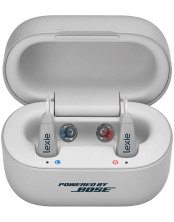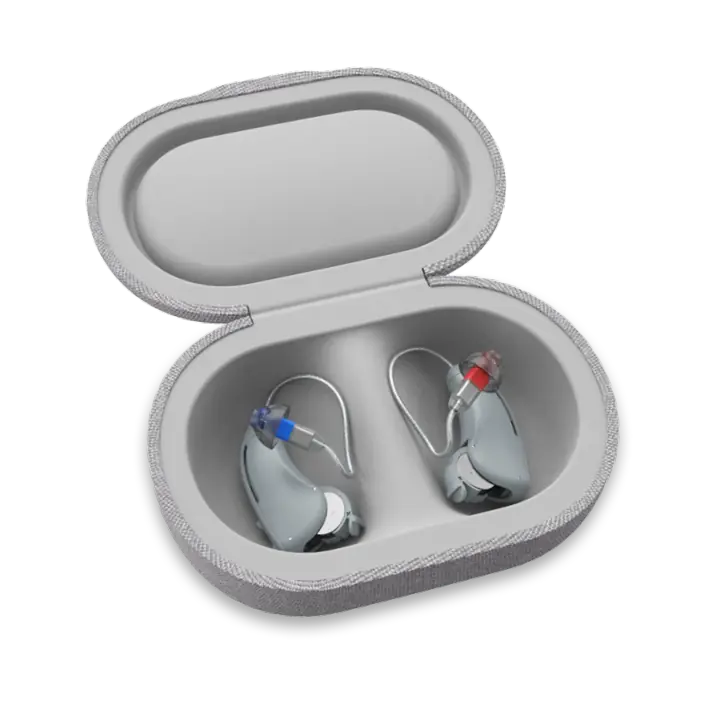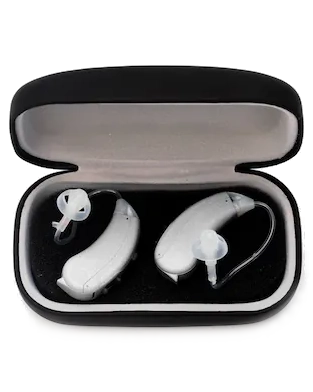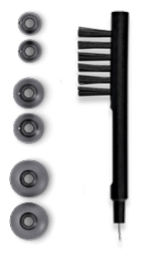Are There Hearing Aids For TV?
Published: August 29, 2023
Updated: August 31, 2023
While there are no specific hearing aids for TV, wearing hearing aids can aid you in hearing and understanding speech much better. There are also a variety of other things you could use, such as those listed below, that could help you enjoy watching TV much more.
After a long day at work, you most probably want to relax on the couch and watch some television, because hey, you deserve it! But, if you have hearing loss, that could mean that sounds are muffled, background music takes over, and you struggle to hear what’s being said. Does this all sound familiar?
Why is it difficult for you to hear the television?
It can be difficult to distinguish between accents, dialects, and fast speech on the television. That’s because background music or noise can interfere with your ability to hear the television, and the technology and sound system of your television can also affect your ability to hear clearly. Flat-screen televisions, for example, have speakers below or behind the television, which directs sound to the floor or the wall behind you, and not directly to your ears.
Fortunately, there are devices that have been developed to make it easier for you to watch the television without making it very loud.
Top assistive devices for watching television with a hearing loss:
1. Soundbars – Soundbars are the easiest way to improve your sound system. They are horizontal speakers that can be placed either above or below your television and can improve the quality and amplification of the sounds from your television, compared to the built-in television speakers.
2. Earphones or headphones – Earphones or headphones can be directly plugged into your television’s headphone jack. Alternatively, you could have wireless headphones that work with Bluetooth (if your television is Bluetooth compatible). Earphones or headphones make the volume more comfortable and clearer to listen to. It also can reduce or eliminate any background noise in your environment that can contribute to your hearing difficulty.
3. Subtitles– Another alternative is activating subtitles on your television. This way, if you are scared you will miss some dialogue, you will be able to read the subtitles to make sure you don’t miss a thing! It works well if there is a lot of background noise in your environment that is affecting your ability to hear the television or if you don’t want to disturb others in the same room. Enabling subtitles may be different for each television, but it usually is found in the settings of your television.
4. Television Audio settings – Most televisions have an “audio setting” which you can set to change the audio of your television to your preference. Some televisions may have an option to adjust the frequencies on your television. This feature may be useful to lower the bass and mid-range frequencies and increase the upper mid-range and higher frequencies. You may want to do this as a lot of important speech information is found in the higher frequencies and these are usually the frequencies we struggle to hear.
5. Hearing aids – Hearing aids can improve speech understanding in all aspects of your life and for your television. Hearing aid users have fewer difficulties watching television than non-hearing aid users. Hearing aids have a volume control, so if you can’t hear the television, instead of turning the television volume up, you can turn the hearing aid volume up. Your volume control on your hearing aid will ensure you can hear the television without making the television too loud for others in the same room. Most hearing aids can have an additional program that is specific just for television. If you enjoy watching a lot of television, make sure you ask your audiologist to add a television program to your hearing aid.
There is a range of assistive listening systems that you can use in conjunction with your hearing aid, and include the following:
- Induction Loops – A loop system is a big copper wire that is placed around the circumference of a room which creates an electromagnetic field. It also can be a loop worn around your neck. It connects to the audio output of the television that transmits sound directly from the television to the telecoil in your hearing aid. Induction loops are advantageous as multiple listeners can tune in via their hearing aids (if their hearing aids have telecoils). When using a loop system, the hearing aid is directly connected to the television. Therefore, any background noise in your environment will be blocked out, and distance issues between yourself and the television won’t be a problem.
- Bluetooth – The majority of modern hearing aids have built-in Bluetooth connectivity. This enables your hearing aid to be paired with your television (if your television is Bluetooth compatible, or you can purchase a Bluetooth streaming box). and allows the sound to be streamed wirelessly from the television directly to your hearing aid.
- FM Systems – This is a wireless system to help improve speech understanding. It consists of a transmitter microphone that picks up sound and sends it to an FM system (that is connected to your hearing aid) by radio waves. This transmitter can be connected to your television, and the sound from the television will arrive directly into your ear via the hearing aid.
You can rest assured that you don’t need to miss out on your favorite television shows because you are struggling to hear your television. Try out some of these devices when watching television with hearing loss to see which one is most valuable to you and watching television will become a more enjoyable and relaxing for you.






